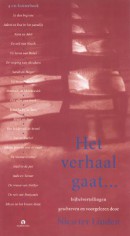Product informatie
- ISBN 9789085300076
- ISBN 10 908530007X
- Druk 1
- Taal Engels
- Uitgever Home Academy Publishers
- Onderwerp Gesproken tekst voor volwassenen (CD-tape)
- Beschikbaar sinds 9 December 2005
Samenvatting
The history of today's European Union (EU) begins in May 1950 when the French foreign minister Robert Schuman offered to pool his country's coal and steel resources with those of France's enemy, Germany, under the control of a single supranational authority. A year later the governments of France, Germany, Italy and the Benelux countries signed the Treaty of Paris establishing the European Coal and Steel Community. Hereby, they relinquished their national sovereignty over heavy industry. Since then, the Community has been in constant movement; ebbing and flowing, but never still. Its subsequent development has often been described in two terms - widening and deepening. These are often juxtaposed, but unnecessarily so. By widening is meant expanding the geographical scope of the ... Community by accepting new member states. By deepening is meant the assumption by the Community of new tasks of the acquisition by Community institutions of greater responsibility in executing the tasks that it already has. These lectures explain the underlying reasons behind the main developments of the insitutional architecture of the EU. To explain the milestones in that history it addresses three related questions:the form: why was supranationality chosen?the timing: why did events occur when they did?the competencies: why were new policy areas chosen?To answer these questions we eschew the clutter of day-to-day politics and negotiations and turn to deeper structural causes. The result is a history that is richer and intellectually more satisfying than much of the more elegiac literature of the European Union that passes for history. Published in cooperation with Studium Generale Leiden University InhoudsopgaveCD 1: (apr. 60 minutes)Chapter 1: The First Supranational Community: The European Coal and Steel CommunityChapter 2: A Missed Chance: The European Defence Community CD 2: (apr. 60 minutes)Chapter 3: The Creation of the European Economic Community: The Rome TreatiesChapter 4: Reactive Nationalism? De Gaulle and Europe CD 3: (apr. 60 minutes)Chapter 5: Reactive Nationalism? The British Membership ProblemChapter 6: 1992. The Completion of the Internal Market CD 4: (apr. 60 minutes)Chapter 7: The European Union. Economic and Monetary UnionChapter 8: A Family of Twenty-five. EU Enlargement Over de sprekerProfessor dr. Richard T. Griffiths (1948) obtained his BSc(Econ) in Economic History and Russian Studies from University College Swansea (1970) and his PhD in History from Cambridge University (1977).
Meer boeken van uitgever Home Academy Publishers
Meer boeken met de onderwerpen Gesproken tekst voor volwassenen (CD-tape)
Veel gestelde vragenmeer antwoorden
Hoe werkt Resale.nl?
Je kunt op de website advertentie(s) plaatsen van de boeken die u wilt verkopen. Een potentiële koper neemt dan contact met je op om samen een prijs af te spreken en de transactie verder af te handelen. Houdt hierbij onze aanbevelingen voor een veilige transactie in gedachten en voorkomt dat je slachtoffer wordt van oplichting.
Hoe kom ik in contact met de verkoper?
Je kunt een reactie versturen door bij de betreffende advertentie van de verkoper op de knop ‘doe een bod’ te drukken. Je kunt nu een bod doen op de advertentie en een persoonlijk bericht toevoegen. Het verstuurde bod brengt je in contact met de verkoper via e-mail.
Wat zijn de kosten voor het verkopen van mijn studieboeken?
Je kunt geheel gratis gebruik maken van de diensten van Resale.nl. Resale.nl haalt zijn inkomsten uit advertenties.
Hoe kan ik een boek kopen?
Resale.nl werkt globaal op de volgende manier:
- Zoek via het zoekveld het studieboek dat je wilt kopen.
- Uit de zoekresultaten kies je het studieboek waar je geïnteresseerd in bent.
- Op de detailpagina van het studieboek kun je een overzicht vinden van de personen die het studieboek verkopen.
- Je kunt nu een bod plaatsen door op de button te klikken. Het bod wordt via e-mail aan de verkoper verzonden.
- De verkoper van het studieboek neemt contact met je op door een reactie te geven op het bod dat je hebt verzonden. Met de verkoper kun je gezamenlijk een prijs afspreken. Houdt hierbij onze aanbevelingen voor een veilige overdracht in gedachten en voorkom dat u slachtoffer wordt van oplichting.
Hoe weet ik wat ik koop?
Om te achterhalen of wat je koopt ook daadwerkelijk is wat er wordt geadverteerd is het verstandig om bij de verkoper langs te gaan en het aangebodene te bezichtigen. Doe je dit niet, dan loopt je een zeker risico. Onder het kopje ‘Hoe kan ik de kans op misbruik verkleinen’ kun je meer over dit onderwerp vinden.
Kopers over Resale.nl
bart van gijsel
"Ik ben erg tevreden over deze verkoper de familie thus. Goede snelle levering."
Patrice Michel
"De verkoper heeft er alles aan gedaan om het door mij bestelde product zo snel mogelijk naar mij toe te krijgen. Heeft me van iedere stap op de hoogte ..."
marjolein
"Besteeling snel bezorg, in goede staat net zoals beschrijving en goede communicatie met verkoper!"
marjolein
"Goed contact, snel en in goede orde ontvangen. Staat van het boek was zo goed als nieuw!"
hilda1
"goede medewerking en hulp dank u wel"
Tineke
"Het bestelde werd netjes en snel afgeleverd. De prijs was goed."
stacy
"Goed verpaktBoek ziet er mooi uit"
elisa
"Goede levering alleen jammer dat er niet bij was gezet dat er al in geschreven was"
Elly
"Verkoper reageerde snel op mijn emails en heeft ook het boek snel opgestuurd.Het boek was niet van nieuw te onderscheiden. Was waarschijnlijk niet gebruikt. ..."
Gerard+[2]
"Prettig contact gehad en goed zaken kunnen doen."
















